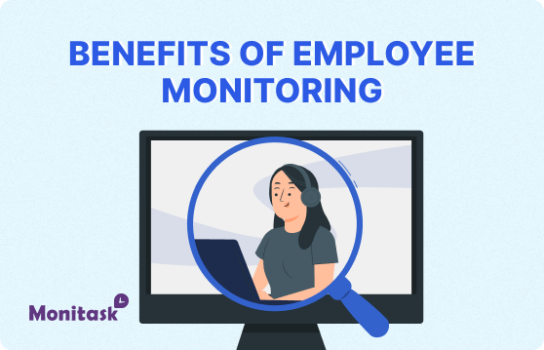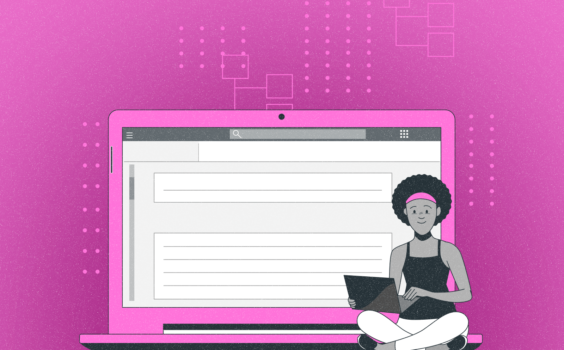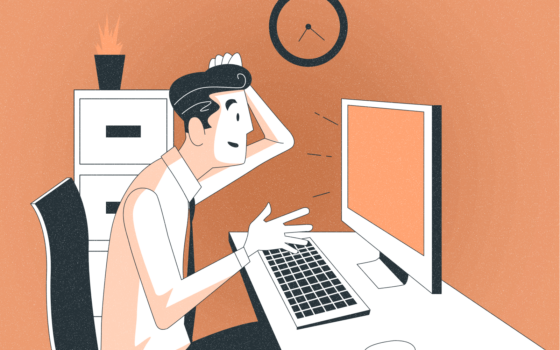Goodbye Email
What is a Goodbye Email?
A goodbye email, also known as a farewell email or departure email, is a professional communication sent by an employee who is leaving their current position or company. This email serves as a formal announcement of the employee's departure and is typically sent to colleagues, clients, and other relevant stakeholders within the organization.
The purpose of a goodbye email is multifaceted. It allows the departing employee to:
- Inform colleagues and contacts about their impending departure
- Express gratitude for the experiences and relationships formed during their tenure
- Provide necessary information for a smooth transition
- Maintain professional connections for future networking opportunities
The Importance of Goodbye Emails in the Workplace
Goodbye emails play a crucial role in maintaining professional relationships and ensuring a smooth transition when an employee leaves an organization. Here are some key reasons why goodbye emails are important:
1. Professionalism and Courtesy
Sending a goodbye email demonstrates professionalism and courtesy. It shows respect for colleagues and the organization by formally announcing your departure rather than simply disappearing without explanation.
2. Clarity and Transparency
A well-crafted goodbye email provides clarity about the employee's departure, helping to prevent confusion or speculation among coworkers. It allows for transparency in communicating the reasons for leaving (if appropriate) and the employee's future plans.
3. Knowledge Transfer and Continuity
Goodbye emails can include important information about ongoing projects, key contacts, and other relevant details that help ensure a smooth transition of responsibilities. This is particularly important for maintaining continuity in client relationships and project management.
4. Networking Opportunities
By sending a goodbye email, departing employees can maintain professional connections with colleagues and clients. These connections may prove valuable for future networking, job opportunities, or collaborations.
5. Emotional Closure
For many employees, sending a goodbye email provides a sense of emotional closure. It allows them to express gratitude, share positive memories, and say farewell to colleagues they've worked closely with over time.
Key Components of an Effective Goodbye Email
When crafting a goodbye email, it's important to include certain key elements to ensure it's both professional and effective. Here are the essential components:
1. Clear Subject Line
The subject line should clearly indicate the purpose of the email, such as "Farewell and Thank You" or "Announcing My Departure."
2. Announcement of Departure
Begin the email by clearly stating that you are leaving the company. Include your last day of work to provide clarity.
3. Expression of Gratitude
Thank your colleagues, supervisors, and the organization for the opportunities and experiences you've had during your tenure.
4. Positive Reflections
Share brief positive memories or highlights from your time with the company. This helps leave a lasting positive impression.
5. Future Plans (Optional)
If appropriate, you may choose to share your future plans or the reason for your departure. However, this is not always necessary or advisable, depending on the circumstances.
6. Transition Information
Provide details about the transition of your responsibilities, including who will be taking over your projects or whom to contact for specific matters.
7. Contact Information
Include your personal contact information for future correspondence, such as a personal email address or LinkedIn profile.
8. Closing Remarks
End the email on a positive note, wishing your colleagues well and expressing hope for future connections.
Best Practices for Writing a Goodbye Email
To ensure your goodbye email is well-received and effective, consider the following best practices:
1. Keep it Professional
Maintain a professional tone throughout the email, even if you're close to your colleagues. Remember that this email may be forwarded or shared within the organization.
2. Be Positive and Gracious
Focus on the positive aspects of your experience with the company. Avoid mentioning any negative experiences or grievances, as this can leave a poor lasting impression.
3. Be Concise
While it's important to cover all necessary information, try to keep the email relatively brief. Your colleagues likely have busy schedules, so a concise message is more likely to be read in full.
4. Personalize When Possible
If you're sending individual emails to close colleagues or clients, try to personalize the message with specific memories or acknowledgments of your working relationship.
5. Proofread Carefully
Ensure your email is free of errors by proofreading carefully. A well-written, error-free email reflects positively on your professionalism.
6. Consider Timing
Send your goodbye email at an appropriate time, typically a day or two before your last day. This allows colleagues time to respond or say goodbye in person if they wish.
7. Follow Company Protocol
Check with your HR department or manager about any specific protocols or guidelines for sending goodbye emails within your organization.
Potential Challenges and Considerations
While goodbye emails are generally beneficial, there are some challenges and considerations to keep in mind:
1. Emotional Impact
Leaving a job can be emotional, and writing a goodbye email may stir up various feelings. It's important to maintain a professional tone despite any emotional attachments.
2. Confidentiality Concerns
Be mindful of any confidentiality agreements or sensitive information. Avoid sharing details about your new position or company if it could be seen as a conflict of interest.
3. Negative Departures
If you're leaving under less-than-ideal circumstances, crafting a positive goodbye email can be challenging. In such cases, it may be best to keep the email brief and focus on gratitude for the overall experience.
4. Large Organizations
In large companies, it may not be feasible or appropriate to send a goodbye email to everyone. Consider sending a general email to your immediate team or department and individual messages to key contacts.
5. Cultural Differences
Be aware of cultural differences in how departures are handled. In some cultures, formal goodbyes may not be the norm, while in others, they may be expected.
The Impact of Goodbye Emails on Company Culture
Goodbye emails can have a significant impact on company culture and employee morale. Here's how:
1. Fostering Transparency
When employees send thoughtful goodbye emails, it promotes a culture of openness and transparency within the organization.
2. Reinforcing Company Values
Well-written goodbye emails often reflect on positive experiences and company values, reinforcing these ideals for remaining employees.
3. Encouraging Positive Departures
A culture that embraces goodbye emails can lead to more positive departures, which can benefit the company's reputation and future recruiting efforts.
4. Facilitating Knowledge Sharing
Goodbye emails that include transition information can help facilitate knowledge sharing and continuity within the organization.
5. Building Long-term Relationships
By encouraging professional goodbyes, companies can foster long-term relationships with former employees, potentially leading to future collaborations or referrals.
The Role of HR in Goodbye Emails
Human Resources plays a crucial role in managing the goodbye email process within an organization. Here are some key responsibilities:
1. Developing Guidelines
HR should create clear guidelines for goodbye emails, including what information should be included and any specific company protocols.
2. Providing Templates
Offering templates or examples of appropriate goodbye emails can help employees craft effective messages.
3. Reviewing Content
In some cases, HR may need to review goodbye emails before they're sent, especially for senior-level employees or in sensitive situations.
4. Managing Distribution Lists
HR can assist in determining appropriate distribution lists for goodbye emails, ensuring they reach relevant parties without being overly broad.
5. Facilitating the Transition Process
HR can work with departing employees to ensure their goodbye emails include necessary transition information and comply with any confidentiality requirements.
The Future of Goodbye Emails in the Digital Age
As workplace communication continues to evolve, so too will the nature of goodbye emails. Here are some trends and considerations for the future:
1. Video Farewells
With the increasing use of video communication, some employees may opt for video farewell messages in addition to or instead of traditional emails.
3. Social Media Announcements
Professional social media platforms like LinkedIn are becoming increasingly popular for announcing career changes, sometimes complementing or replacing internal goodbye emails.
3. AI-Assisted Drafting
As AI technology advances, we may see tools that help employees draft personalized and effective goodbye emails based on their specific circumstances and company guidelines.
4. Digital Farewell Boards
Some companies are implementing digital farewell boards or channels where colleagues can leave messages for departing employees, creating a more interactive goodbye experience.
5. Remote Work Considerations
With the rise of remote work, goodbye emails may become even more important as a means of formally concluding professional relationships in virtual environments.
Conclusion
Goodbye emails are an important aspect of professional communication, serving multiple purposes in the workplace. They provide closure, maintain relationships, and ensure smooth transitions when employees depart. By understanding the key components and best practices for crafting these emails, both employees and organizations can benefit from this professional courtesy.
As workplace communication continues to evolve, the format and delivery of goodbye messages may change, but their fundamental importance is likely to remain. Whether sent via traditional email, video message, or through new platforms yet to emerge, the act of saying a professional goodbye will continue to play a vital role in maintaining positive workplace relationships and fostering a culture of respect and appreciation.
Ultimately, a well-crafted goodbye email is more than just a formality – it's an opportunity to leave a lasting positive impression and to honor the professional relationships that have been built over time. As such, it deserves thoughtful consideration and careful execution, benefiting both the departing employee and the organization they're leaving behind.


